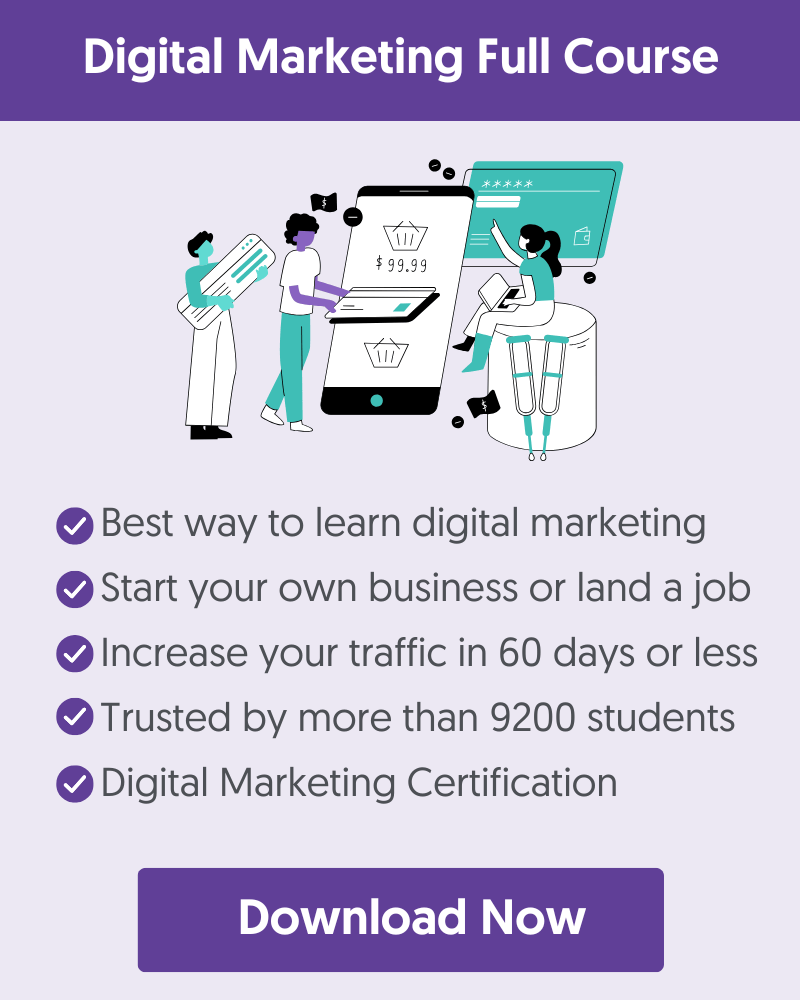- 1. Define Your Goals and Target Audience
- 2. Choose a Keyword Research Tool
- 3. Identify Your Primary Keywords
- 4. Discover Related Keywords
- 5. Find Long-Tail Keywords
- 6. Find Trending Keywords
- 7. Analyze Your Competitor’s Keywords
- 8. Evaluate Keyword Metrics
- 9. Examine The Search Intent Behind Each Keyword
- 10. Group Keywords Into Topic Clusters
- 11. Prioritize Your Keywords
- 12. Use ChatGPT To Get More Ideas
- 13. Monitor Your Keyword Rankings
- Learn More About Keyword Research
The first step for a successful SEO strategy is to find the right keywords to target in your campaigns. Our comprehensive checklist will help you perform keyword research like a pro and discover valuable keywords to fulfill your business goals.
1. Define Your Goals and Target Audience
Before getting your hands dirty, you should clearly define what you want to achieve with your keyword research. Is your goal to increase organic traffic, generate more leads, or increase sales?
Understanding your specific goals will help you choose the right keywords, as we'll see in step 9 below. For example, if your primary goal is to get more traffic from Google, you might focus on keywords with a decent search volume and low keyword difficulty.
However, to increase sales, you should target long-tail keywords with a clear commercial or transactional intent. These keywords will generate less traffic but are more targeted and valuable for your business goals.
Next, get to know your target audience. Use existing data from Google Analytics to gain insights into your visitors' demographics and behavior on your site. What content do they read more? Which categories do they visit, and what buttons do they click?
This information helps you create content that resonates with them. Use the following resources to learn more:
2. Choose a Keyword Research Tool
To perform keyword research, you need to use free and paid tools. The free tools include:
Google Keyword Planner - has data directly from Google. You can use it to find keywords for your SEO and PPC campaigns. Use our Google Keyword Planner tutorial to learn how to use this powerful tool.
Google Trends - use this tool to find trending topics before they become too popular.
Google Search Console - although not a keyword research tool, you can use GSC reports to see which keywords generate the most traffic to your website and create related content. Read our beginner's guide to Google Search Console to get started.
The paid tools will give you valuable metrics about keywords you cannot find otherwise and help you analyze your competitor's strategies and other useful information.
My recommended options are:
Semrush - one of the best tools in the market for years. Recently, they added a cool AI feature that suggests keywords your domain will likely rank for.
Aherfs - one of the most reliable and respected keyword research and analysis tools.
SERanking - a good alternative to Semrush and Ahrefs without the high cost.
Read this guide for more details on selecting a good keyword research tool.
3. Identify Your Primary Keywords
The next step is to start brainstorming your seed keywords, which are phrases related to your brand and the products and services you're selling.
Start by writing down what you want your brand to be known for, then draft a list of related keywords.
For example, we provide online courses and want to become the go-to resource for digital marketing training. Based on that, our primary keywords include:
- "digital marketing"
- "digital marketing courses"
- "digital marketing training"
- "learn digital marketing"
- "start digital marketing career"
4. Discover Related Keywords
To broaden your list and discover other keywords you might have missed, take your seed keywords and enter them into a keyword research tool.
You can then use different filters to group keywords by topic, volume, difficulty, and other metrics.
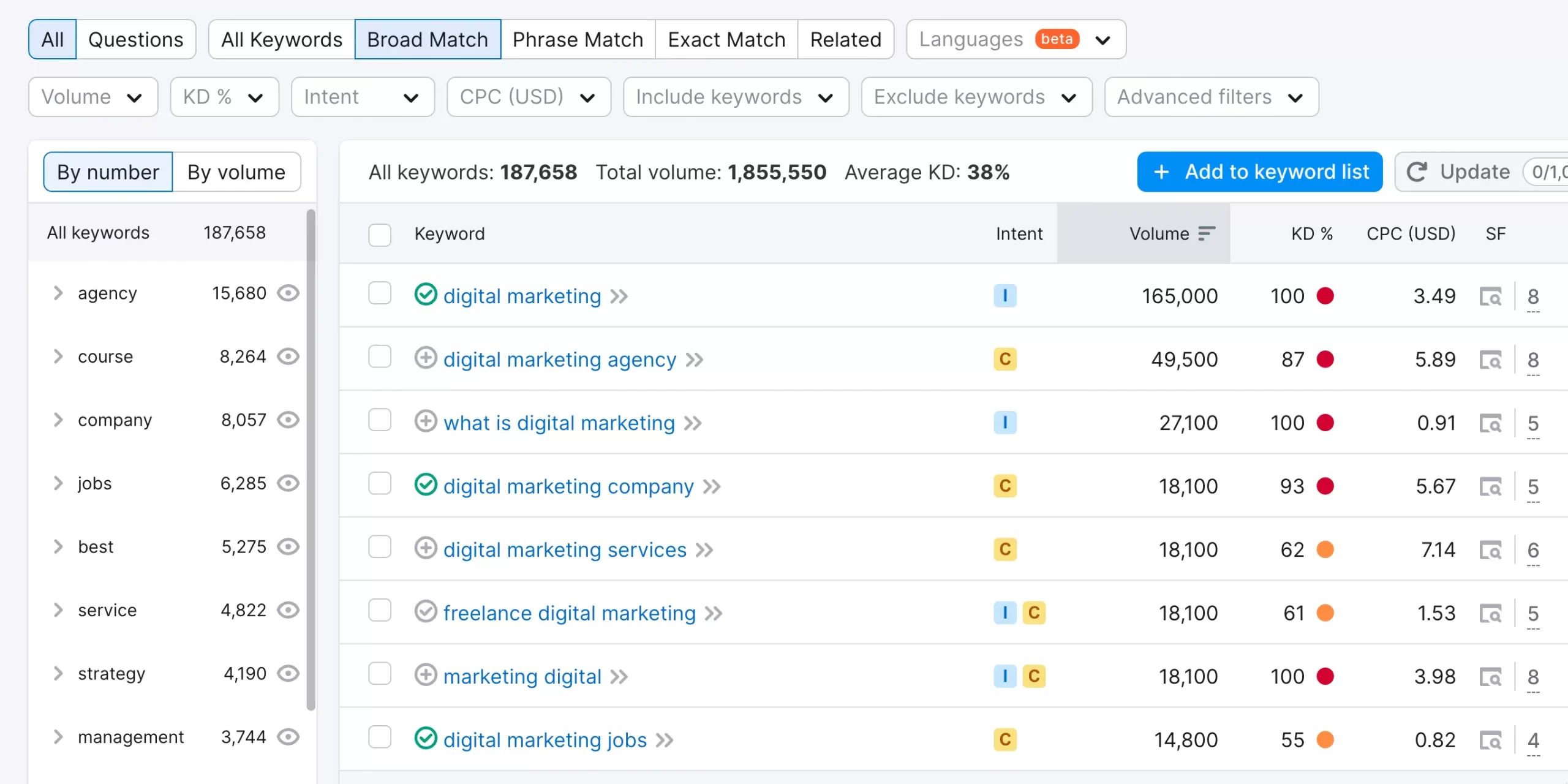
Repeat the process for all your primary keywords and create a mega list of keywords related to your business.
5. Find Long-Tail Keywords
Your seed and related keywords are likely high competition and, thus, difficult to rank for. You must enrich your list with long-tail keywords to increase your chances of getting high rankings and traffic from search engines.
Long-tail keywords are usually search queries consisting of more than 2 words with specific intent. They are searched less often than primary keywords but have a higher conversion rate and less competition.
You can find long-tail keywords by sorting your keyword list by search volume and keyword difficulty.
As you can see in the example below, the keyword difficulty of ranking for a long-tail phrase like "what is the best wet dog food" is 33% compared to 68% for dog food.
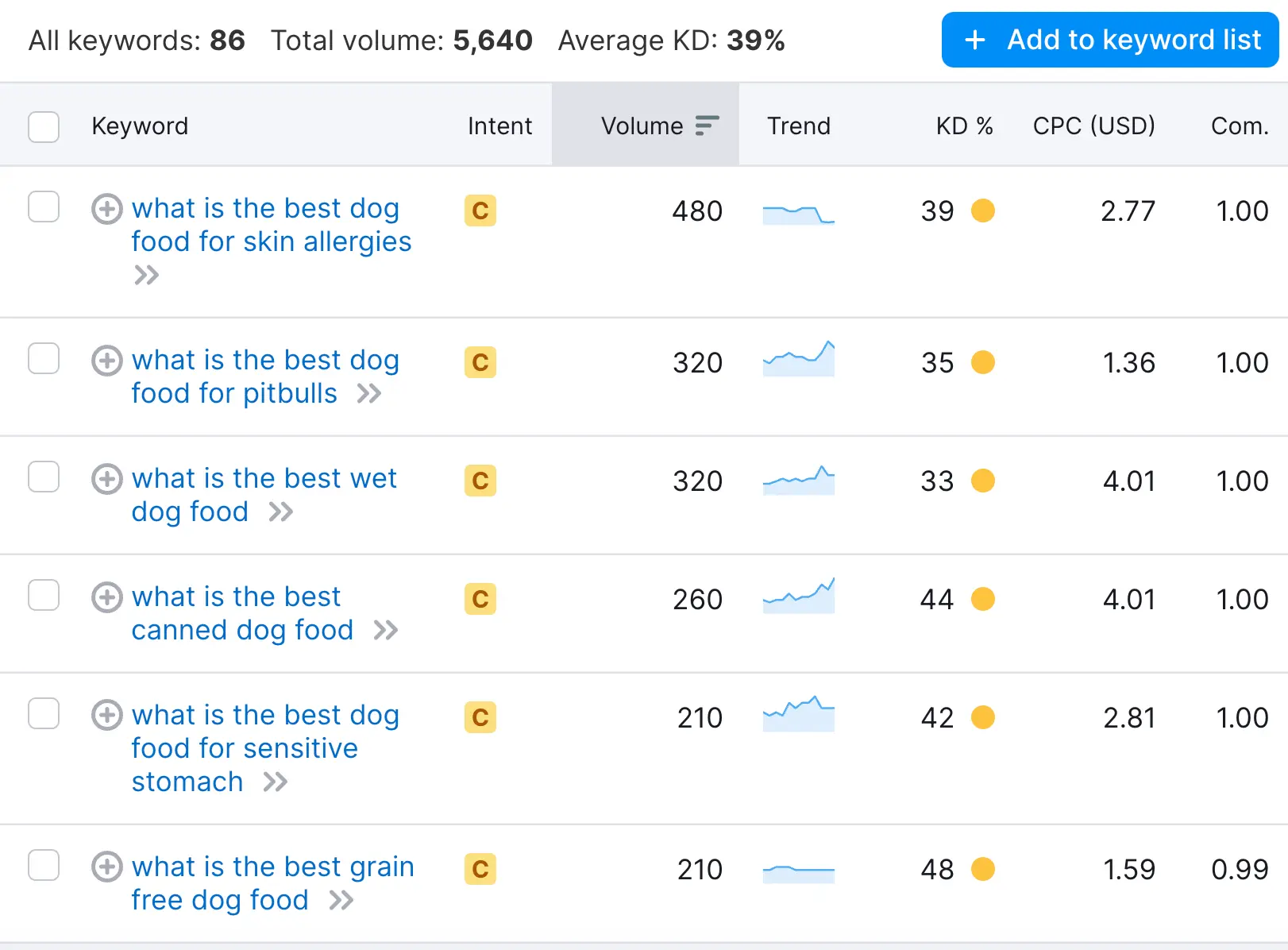
Other ways to find long-tail keywords include using the Google autocomplete feature as you search. Enter your seed keyword and then start writing letters of the alphabet. You'll get suggestions based on what users are searching for.
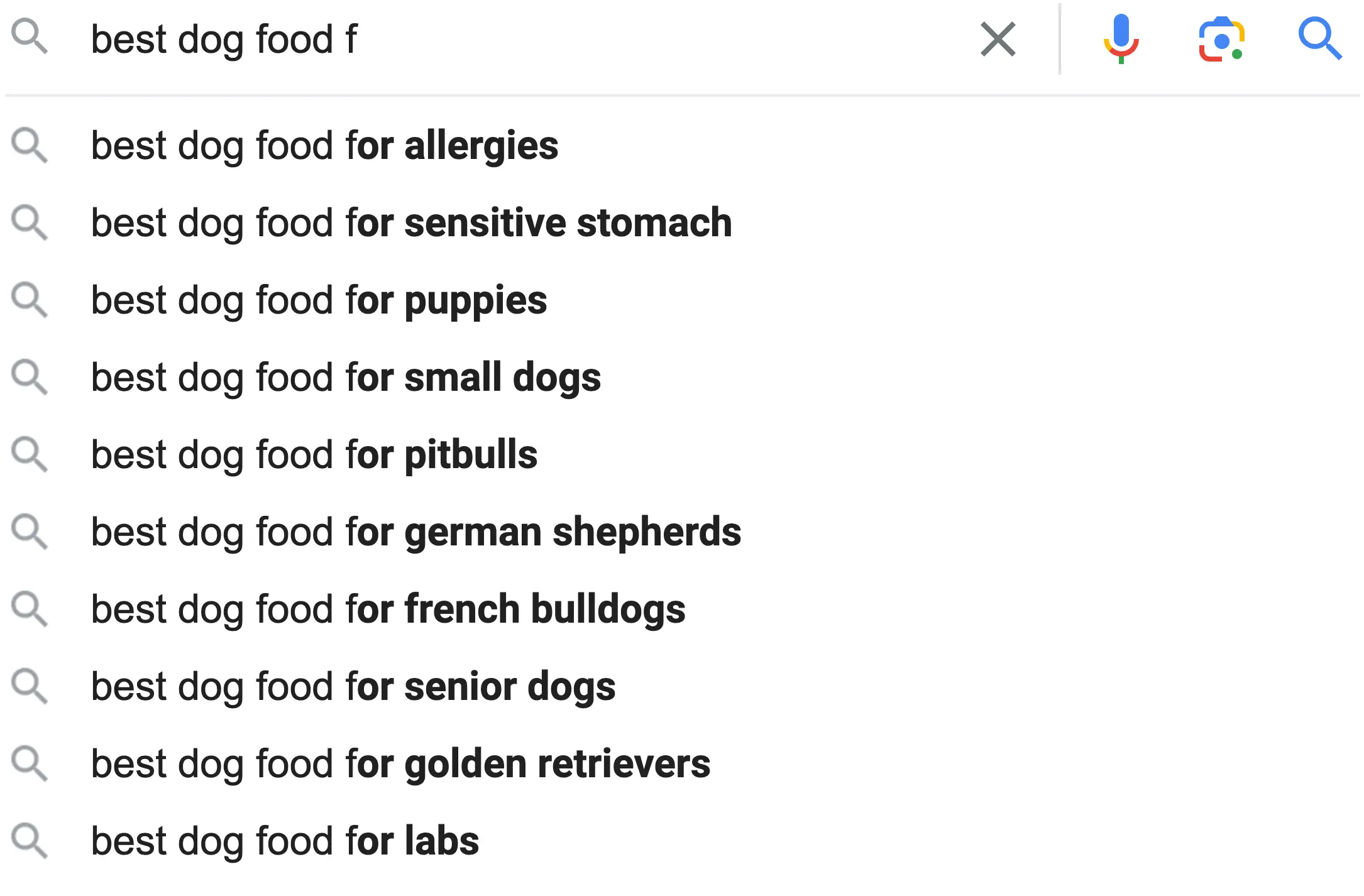
You can also ask ChatGPT to propose a list of long-tail keywords for your seed keywords and analyze them using a keyword research tool to determine their search volume and keyword difficulty.
You can learn more about finding and using long-tail keywords in these two guides:
6. Find Trending Keywords
While doing keyword research, it's worth examining currently trending keywords and topics that are getting attention but are not yet oversaturated.
The easiest way to do this is to go to Google Trends and search for your seed keywords.
Set the location to match your area of interest and look for rising topics.
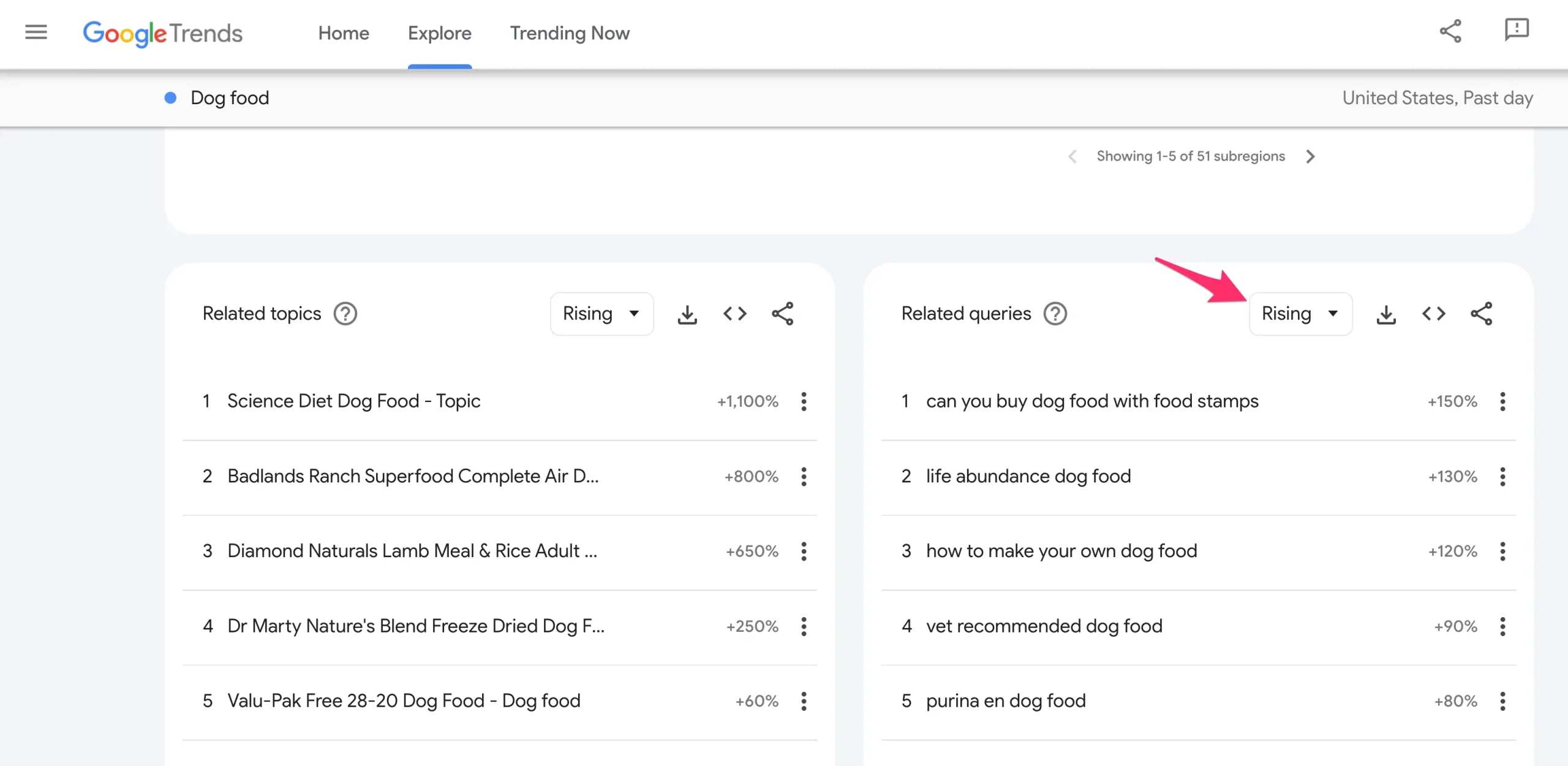
As the screenshot above shows, there are always new opportunities, even in highly competitive niches.
You can also use this guide to find trending topics on other popular platforms.
7. Analyze Your Competitor’s Keywords
Another way to enrich your keyword list is to get ideas from competitors. You can get detailed metrics about the SEO performance of their campaigns and see which keywords they are targeting and missing from your lists.
If you're using Semrush, you can get this info using the Keyword Gap Report. It's as simple as entering the domains you want to analyze and clicking the MISSING tab to find missing keyword opportunities.
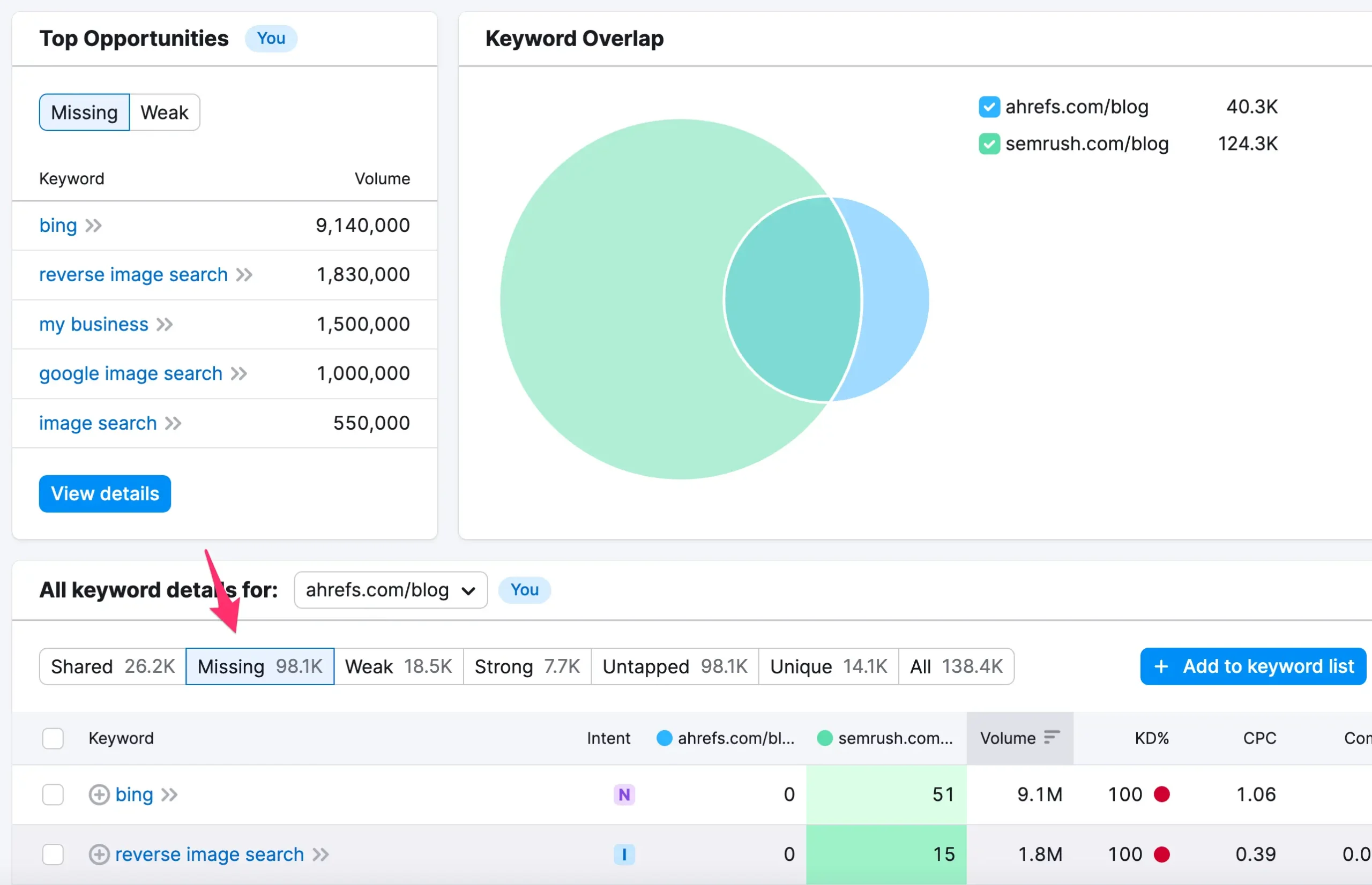
To learn more about competitor analysis, follow these two guides:
8. Evaluate Keyword Metrics
I've mentioned keyword difficulty and search volume a few times above. Let's see how these metrics impact your keyword research process.
Keyword Search Volume: Keyword search volume refers to the average monthly searches performed in Google (or other search engines) for a particular keyword. Most tools calculate this metric based on the average number of searches made in the last 12 months.
While in general, the higher the search volume, the better, you should not ignore low search volume keywords. These keywords can be highly specific and attract a more targeted audience.
Additionally, tools may not always get the numbers right, especially for new or emerging keywords. Initially, they might show low or no search volume, but these keywords can gain traction over time.
As a rule of thumb, your strategy should include a mix of high- and low-search-volume keywords.
Keyword Difficulty (KD): Keyword difficulty is a metric given by SEO tools that estimate how difficult it is to achieve high rankings in Google for a particular keyword. The higher the KD score, the harder the ranking will be.
Use KD as a general guide, but always manually analyze each keyword to estimate your chances of ranking. For more information, follow the instructions in our keyword difficulty guide.
9. Examine The Search Intent Behind Each Keyword
You should closely examine the search intent for each keyword in your list to determine two things:
- If it's a good fit for your business goals.
- What kind of content to create to increase your chances of achieving a good ranking for the particular keyword.
To determine the search intent, you can use the classification provided by keyword research tools. In general, keywords are classified into:
- Navigational - people looking for a specific website.
- Informational - people looking for information, answers to questions, etc.
- Commercial - people looking for specific information about a brand, product, or service.
- Transactional - people are ready to proceed with a specific action, such as purchasing or signing up for a service.
You should also search for a keyword on Google and review the SERPs. Examine the top results and look for content type, format, angle, and depth.
10. Group Keywords Into Topic Clusters
Keyword clustering is a technique that can help you rank for several related keywords that matter to your business. The way it works is simple:
- First, you group related keywords together.
- Then, you identify your main keywords and create pillar pages.
- You then create cluster pages for the related keywords and interlink the pages together.
This approach helps create topical authority for particular topics and increases your chances of ranking for those keywords.
This is how a topic cluster looks in practice.
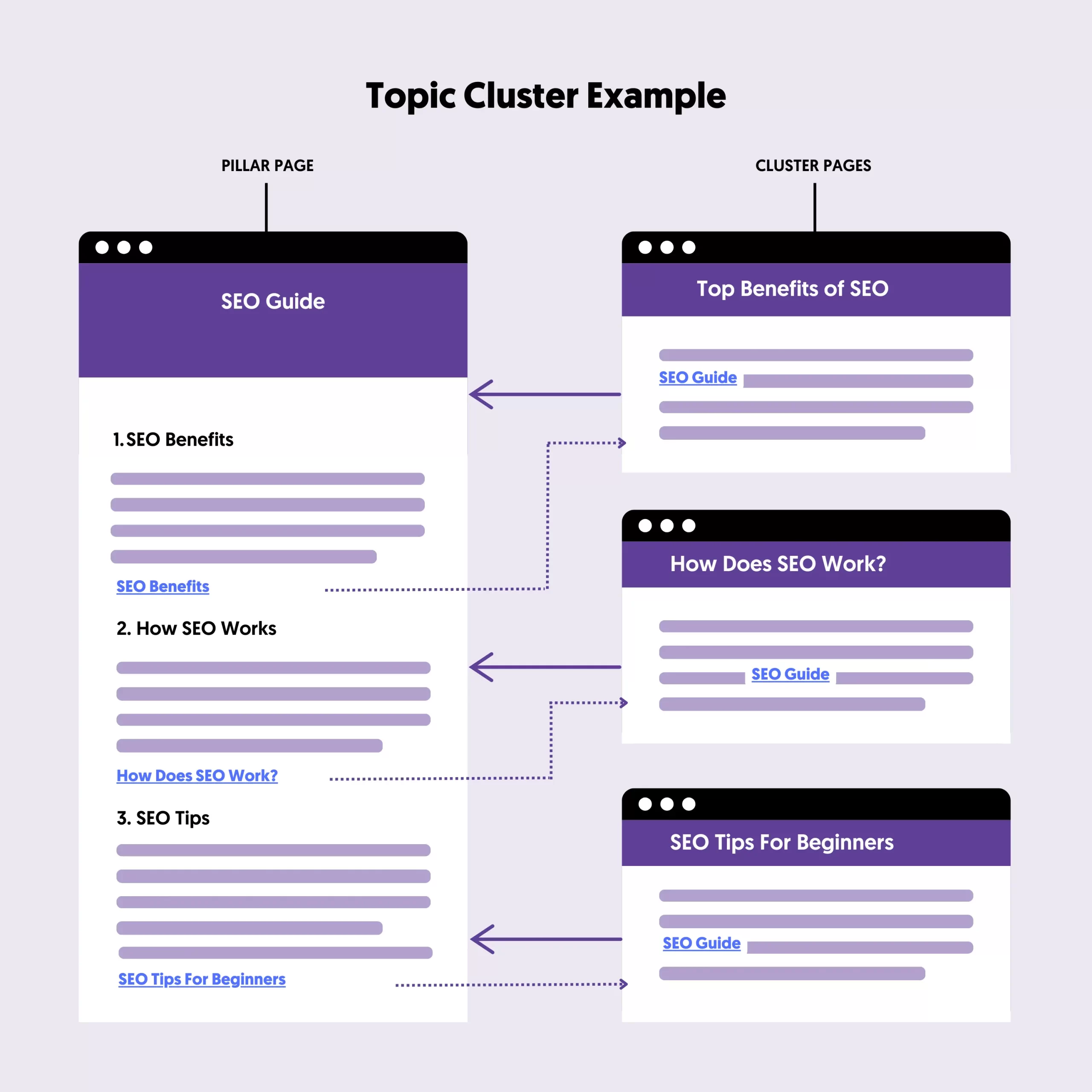
For more information, read our guide on creating topic clusters for SEO.
11. Prioritize Your Keywords
When you reach this point, it's normal for your list to have many keywords. Some are organized into clusters, and others target specific topics that align with your business goals.
While it would be nice to create content to target all keywords, in reality, it's not so simple. Creating good content that can improve your rankings is the most difficult and time-consuming part of content marketing and SEO. To avoid this problem, you should prioritize your work.
Start by assigning keywords to the different stages of a digital sales funnel.
A typical funnel has three stages:
Top-of-the-funnel (ToFu): At this stage, users seek answers to their problems or general information. Keywords usually have high search volumes and competition, but they are great for raising brand awareness and introducing your brand to potential customers.
For example, "what is digital marketing", "learn digital marketing".
Middle-of-the-funnel (MoFu): At this stage users are looking for specific solutions and considering different options. Search phrases are specific and include keywords like "best", "top", and "reviews".
For example, "best digital marketing courses", "best food for small dogs", and "keyword research tools reviews".
Bottom-of-the-funnel (BoFu): At this stage, users are ready to convert (purchase, sign up, subscribe, etc.). Keywords have a commercial or transactional nature and are considered high-intent.
For example, "ahrefs pricing", "semrush review", and "Coursera coupons".

You should start by targeting BoFu keywords, as they have more business value. When users are ready to convert, you want to be found among the available options.
Concentrate on creating content explaining the benefits of your products or services to users and how they can help them solve their problems.
Then, create topic clusters to target MoFu keywords. Don't be afraid to review or mention competitor's products in your content, but highlight your product's unique features.
When you consistently create content for some time, you'll cover all possible keywords for the bottom and middle funnels. At this point, put all your efforts into targeting ToFu keywords.
That's where most of the traffic is, and although the user intent is not commercial or transactional, it's super important for brand awareness and positioning your brand as a leader in your niche.
12. Use ChatGPT To Get More Ideas
Although many paid tools have AI functionality built-in, it's still a good idea to use ChatGPT, Gemini, Claude, or other AI tools to get ideas for keyword research.
In your prompt, give AI as much information as possible about what you want to achieve. Run the suggestions through a keyword research tool to determine their search volume, KD, and other metrics.
Here is an example of a prompt you can use for keyword research:
Give me a list of 20 keywords related to fitness. Cover broad topics that people might search for but avoid commonly used keywords.
For more prompt examples and techniques to get better answers from AI, read these resources:
13. Monitor Your Keyword Rankings
Keyword research is a continuous process and not a once-off task. You should regularly monitor your keyword rankings, see what's working, and adjust your strategy accordingly.
For example, if you notice that you get high rankings for keywords related to a particular topic, this is a sign that Google considers your website an authority on the subject, which means that you have more chances of ranking higher for closely related keywords.
Learn More About Keyword Research
To learn more about keyword research, consider these resources:
